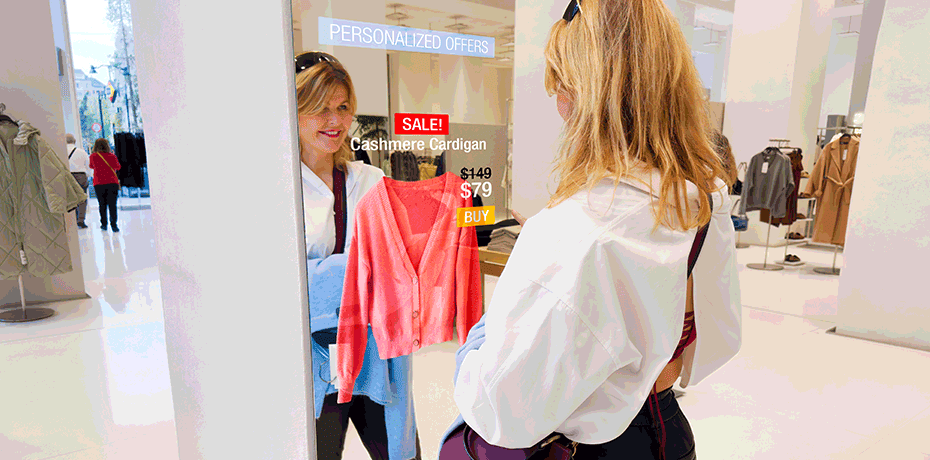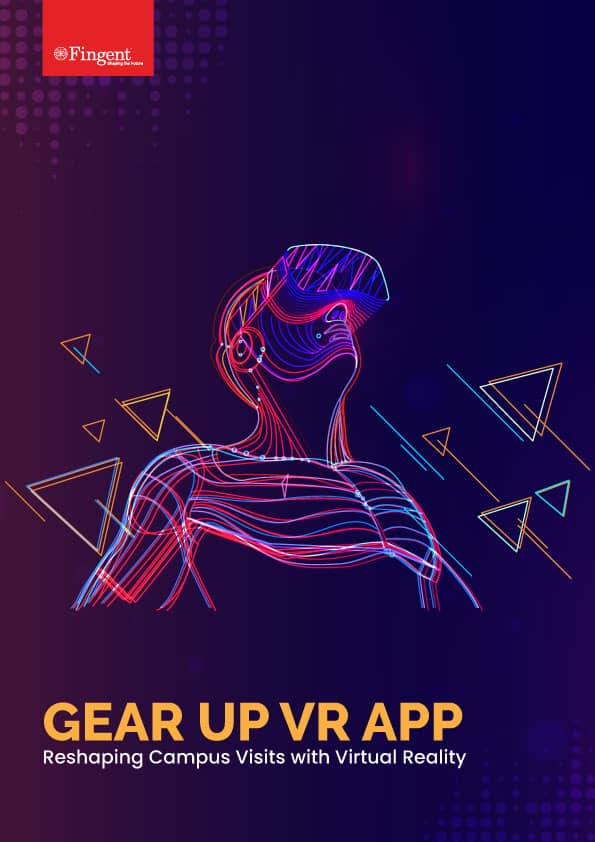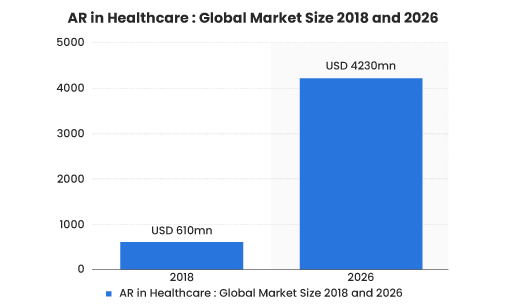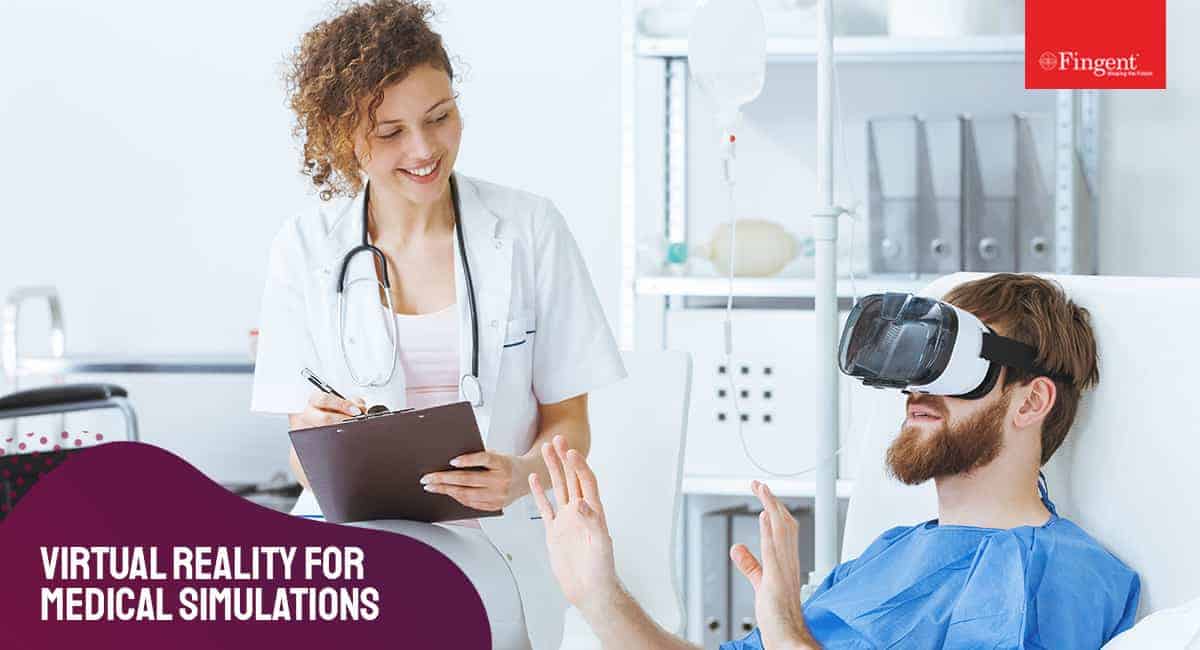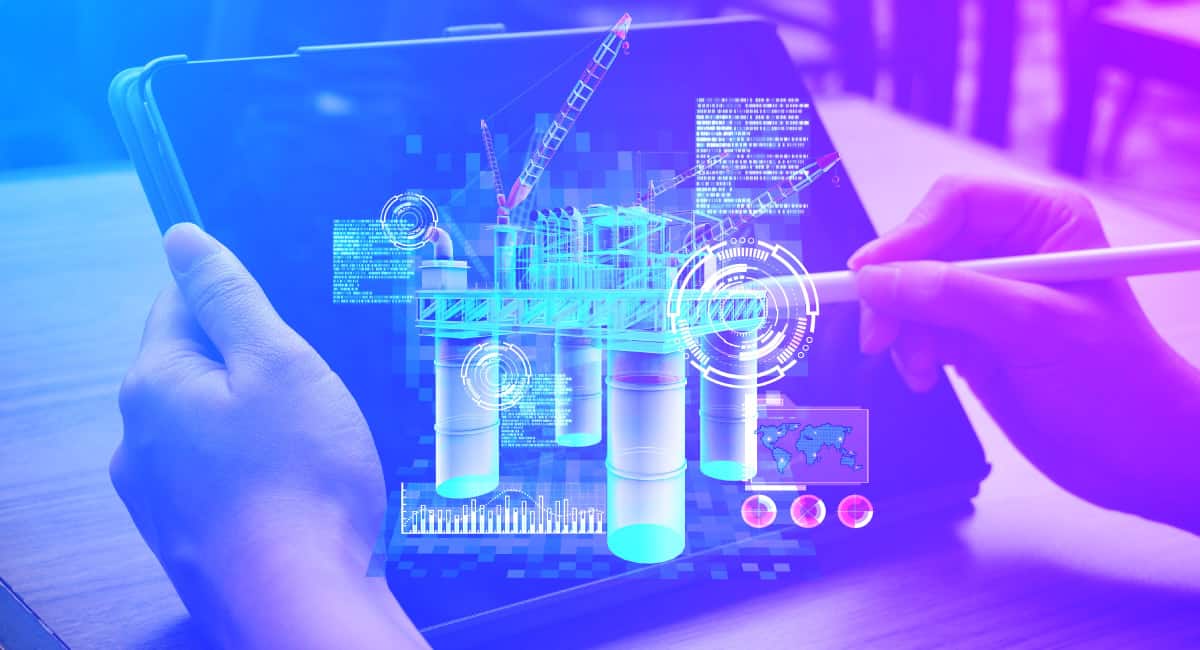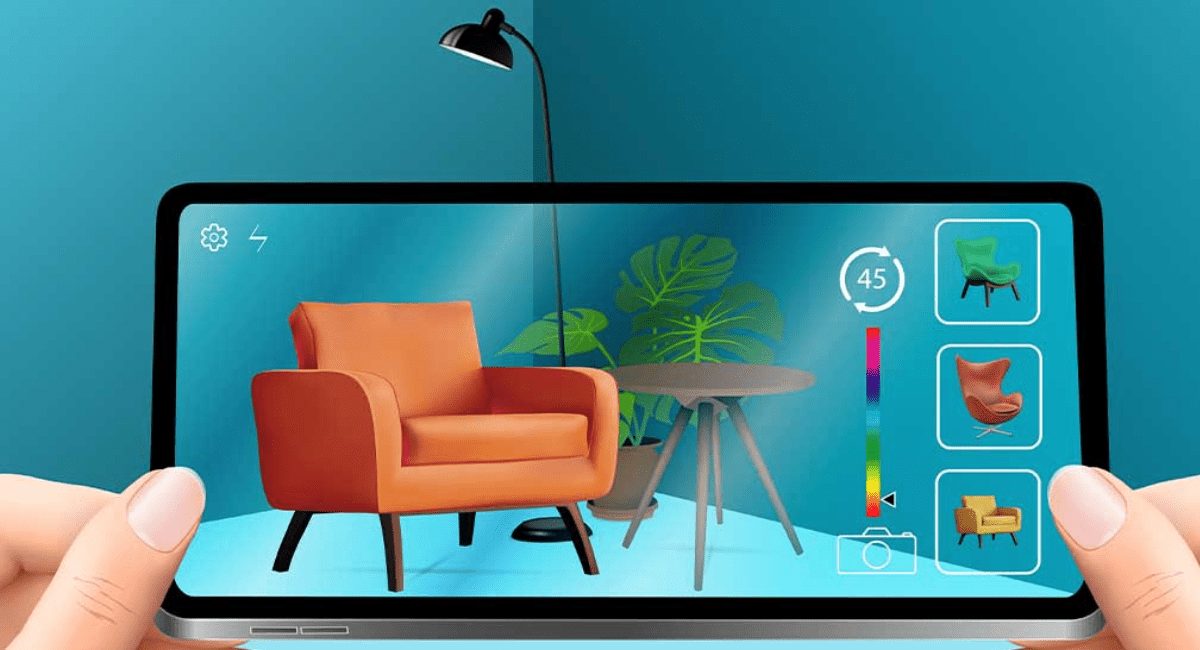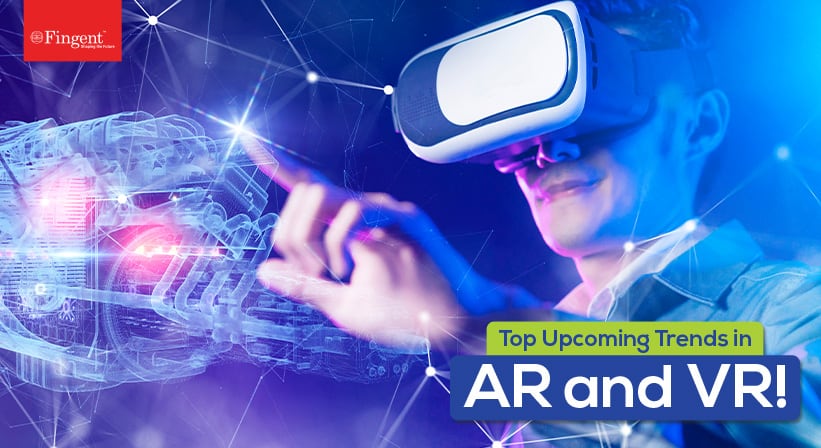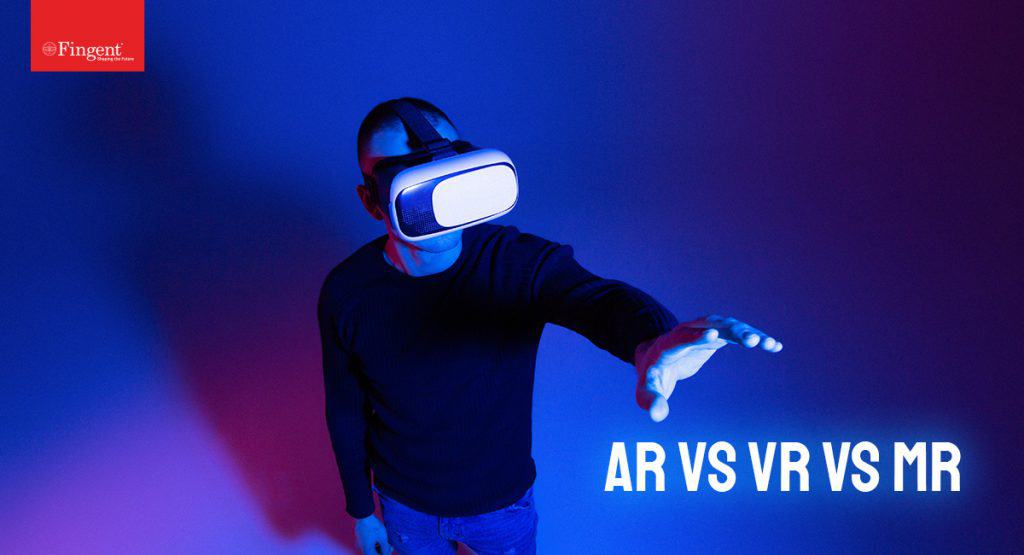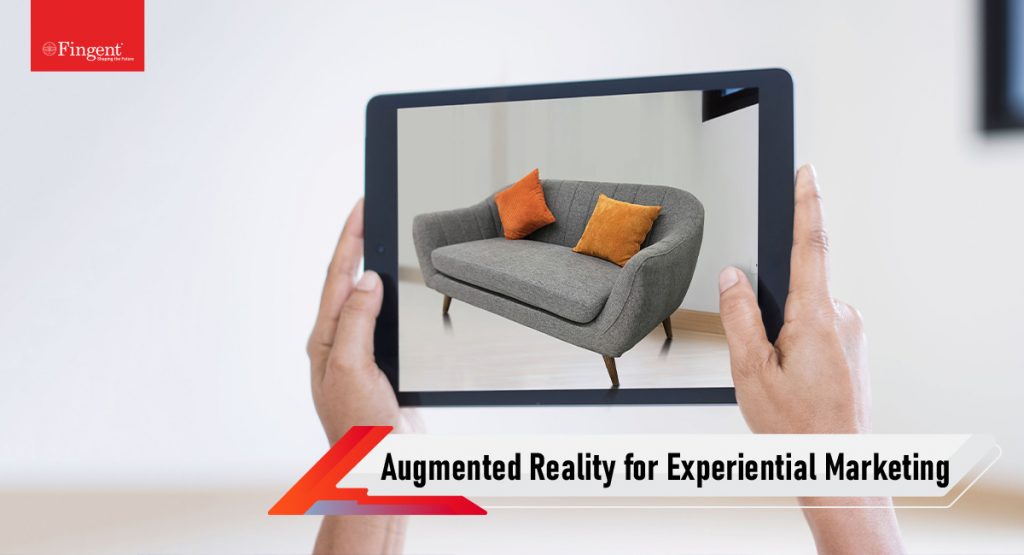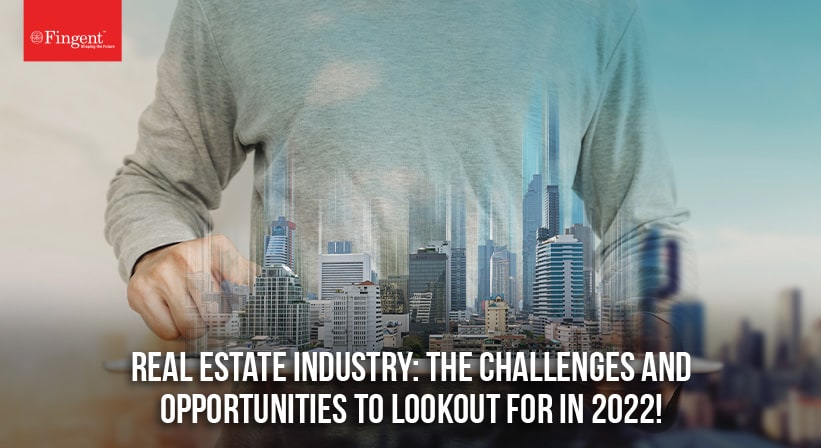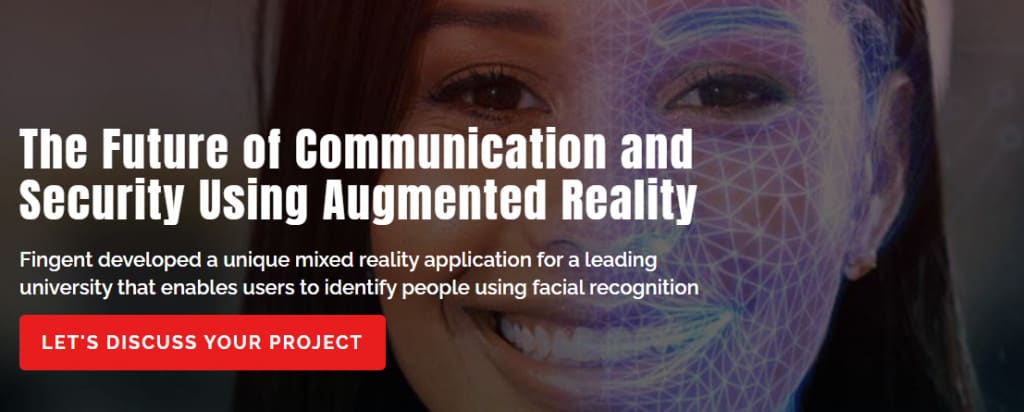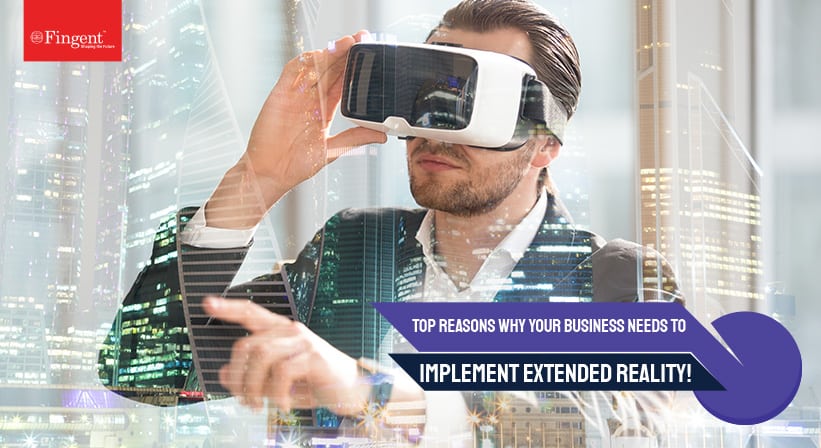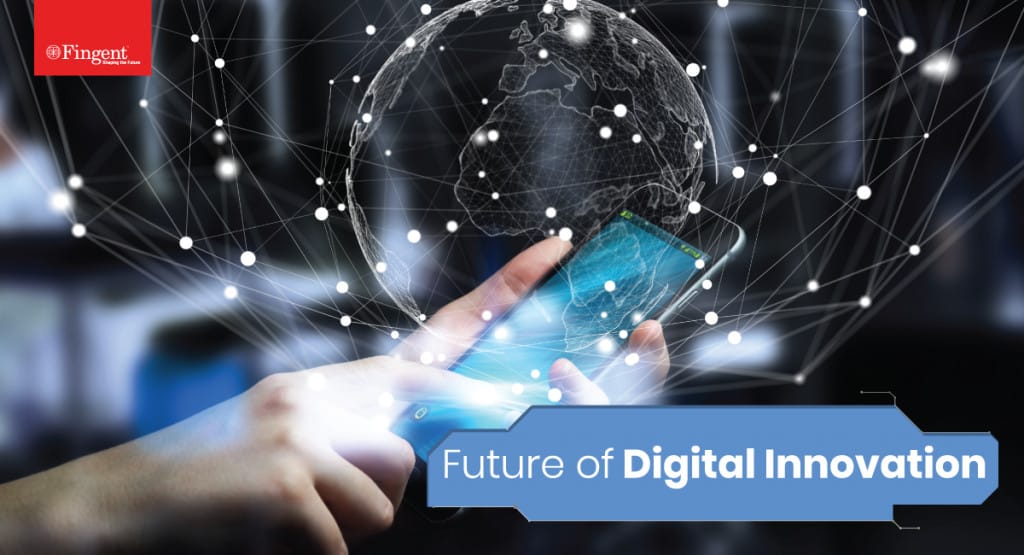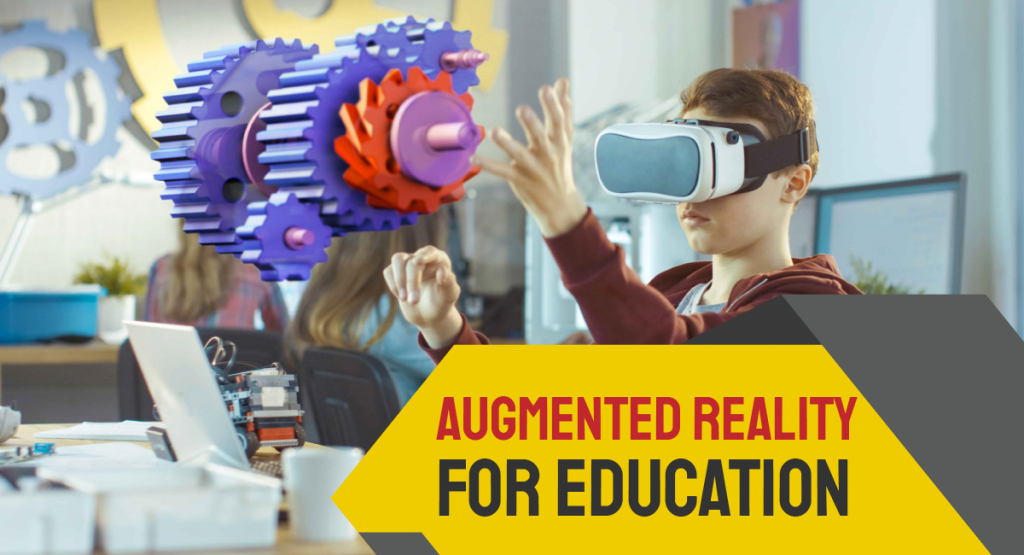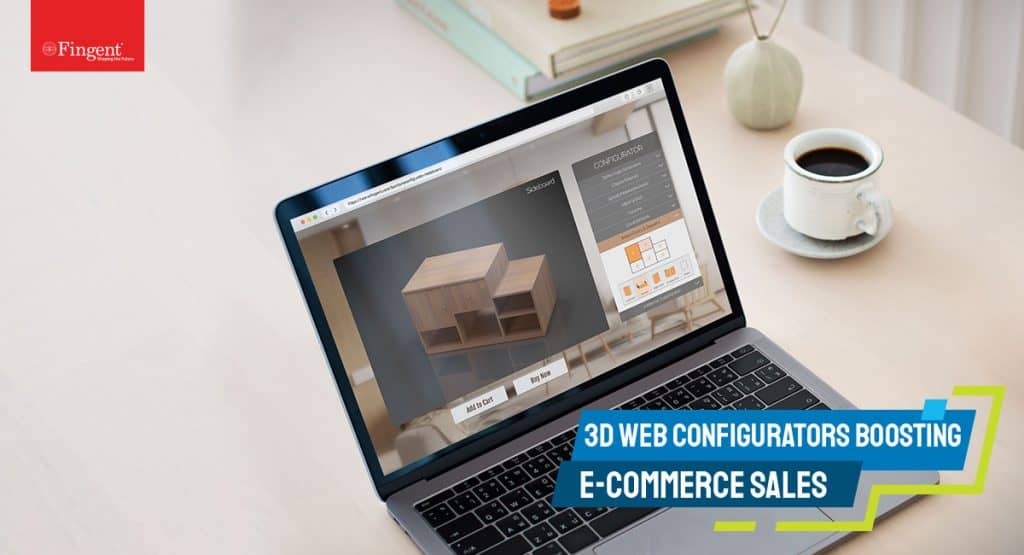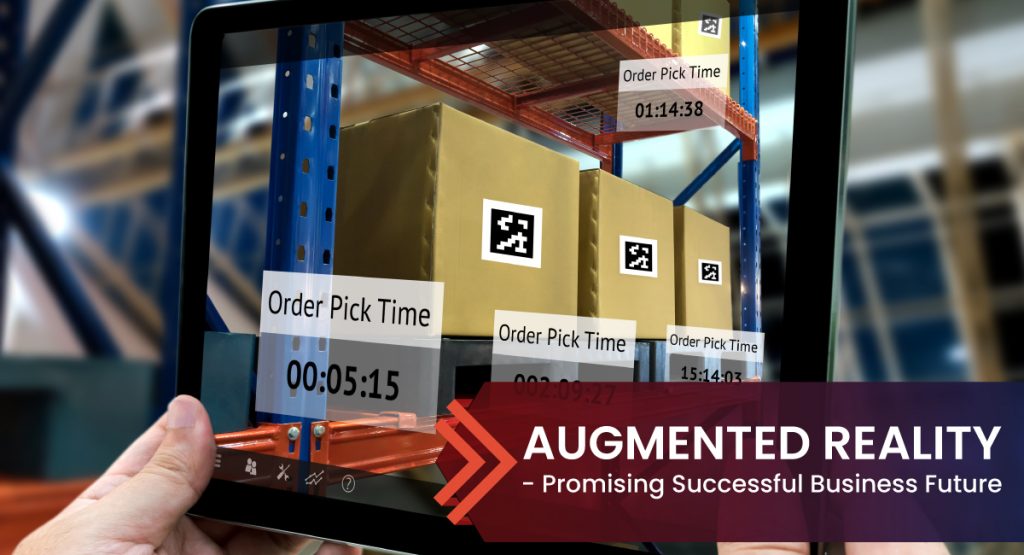Tag: augmented reality
Extended Reality (XR) is not a technological marvel. It’s a force that is reshaping how we interact with the world. This blog will help you discover how XR catalyzes the shifts in customer behavior and market demand. But first, let’s explore what Augmented Reality (AR), Virtual Reality (VR), and Mixed Reality (MR) are.
Join us as we unravel the layers of XR. A fusion that transcends technology and propels us into a realm of possibilities and unique experiences.
Extended Reality (XR): A Fusion of Augmented, Virtual, and Mixed Realities
XR is a versatile umbrella term. It includes a range of immersive technologies. They are changing how we interact with the digital and physical worlds. At its core, XR integrates three primary components: Augmented Reality (AR), Virtual Reality (VR), and Mixed Reality (MR).
- Augmented Reality (AR) – Enhancing Real-world Experiences: AR enriches reality. It overlays digital elements on physical surroundings. This is done through smartphones, smart glasses, or AR headsets.
- Virtual Reality (VR) – Total Immersion in Alternate Realities: VR disconnects users from the physical world. It transports them to synthetic environments using headsets like Oculus Rift or HTC Vive.
- Mixed Reality (MR) – Seamlessly Integrating Real and Digital: MR blends AR and VR, creating a real-time interaction where digital and physical coexist. Devices like Microsoft HoloLens integrate holographic images, bridging the gap between real and virtual realms.
The Evolution of XR: From Novelties to Necessities
Over the years, XR has improved a lot. It has reshaped how we see and interact with the digital world. Initially, XR technologies were perceived as cutting-edge novelties confined to niche applications and experimental projects. But, fast progress and innovation have moved XR into the mainstream. It is widely used in many industries.
One pivotal aspect of this evolution is the distinction between XR and spatial computing. Spatial computing uses spatial mapping and computing to improve interactions in physical spaces. XR covers a broader range of technologies. XR integrates AR, VR, and MR, providing a comprehensive framework for immersive and interactive experiences.
As XR technologies matured, the focus shifted from novelty to practicality. Better hardware, graphics, and advanced sensors made XR apps more realistic and useful. This evolution has facilitated the seamless integration of XR into diverse fields, ranging from healthcare, education, entertainment, and enterprise.
Read More: Augmented Reality in Healthcare
Deliver Revolutionary Customer Experiences with XR Technology
XR: Transforming Customer Behavior and Igniting Business Opportunities
Extended Reality is reshaping customer behaviors and presenting businesses with unprecedented opportunities. The immersive nature of XR technologies has far-reaching effects, as shown below:
1. Enhanced Customer Engagement
XR transforms the customer experience, fostering deeper engagement and interactivity. In retail, for example, AR empowers customers to try products virtually. This reduces uncertainties and bolsters confidence to buy right. This heightened engagement correlates with increased customer satisfaction and loyalty.
2. Personalized Product Experiences
Businesses leverage XR for personalized product interactions. Customers can visualize products in real settings or explore virtual showrooms. This customized approach enriches the shopping process. Businesses can also gain deeper insights into customer preferences.
3. Improved Decision-Making Processes
In the real estate and automotive sectors, XR facilitates decision-making through immersive experiences. Prospective homebuyers can virtually tour properties. Car buyers, meanwhile, can customize and visualize vehicles in intricate detail. This expedites decision-making and enhances the likelihood of successful transactions.
4. Training and Skill Development
XR revolutionizes professional training with VR simulations. Businesses use realistic scenarios to build employee skills. This leads to better performance and lower training costs, making them more efficient.
Medical Simulation Training: XR is used in medical training for simulations. It lets healthcare pros practice surgeries and procedures in a virtual world. This addresses challenges related to limited access to real-life scenarios, enhancing practical skills, and reducing the learning curve.
In industries like manufacturing and construction, XR is used for training. It is for training on complex machinery and equipment. According to a PwC study, using AR/VR devices lets employees train four times faster. This led to a 275% increase in their confidence. AR/VR training emerges as a powerful approach. It substantially minimizes training duration and also helps eliminate training accidents.
5. Opening New Avenues in E-commerce
XR is reshaping e-commerce with AR try-on features and VR-enhanced virtual shopping. This evolution improves online retail, leading to higher conversion and lower returns.
AR Try-Ons in Fashion: E-commerce platforms integrate AR for virtual try-on experiences in the fashion industry. Customers can try on clothing and accessories with their smartphones. This solves challenges related to being unable to try items before buying. This enhances the online shopping experience and reduces return rates.
VR-Enhanced Virtual Shopping: XR technologies, particularly VR, create immersive virtual shopping environments. Customers can explore products in 3D. This addresses challenges from the lack of physical interaction in online shopping. This provides a more engaging and interactive experience, increasing conversion rates.
AR try-on technology in clothing retail boosts Average Order Values (AOVs). It also encourages repeat purchases. According to Threekit, 71% of consumers say they will shop more with AR in their customer journey.
6. Streamlining Product Design and Configuration
XR streamlines processes. These processes are critical for product design in industries like automotive and manufacturing. XR facilitates virtual prototyping in the automotive industry. Designers can create and change 3D vehicle models. This streamlines the design process and addresses challenges related to the cost and time of physical prototyping. It leads to more efficient and cost-effective design changes.
Discover Transformative Business Opportunities & Innovations with Extended Reality
Fingent’s Guide to XR Triumph
Elevate your enterprise to new heights with Fingent’s unparalleled expertise in Extended Reality. Our tailored XR solutions redefine training, customer engagement, and product design processes. We specialize in creating immersive simulations for efficient employee training. Fingent crafts AR/VR apps that enhance customer experiences. We also streamline product design with virtual prototyping and 3D modeling. Seamless integration into existing systems ensures minimal disruption. While continuous support and optimization keep your enterprise at the forefront of innovation. Transform possibilities into reality with Fingent as your strategic XR partner.
Ready to embark on a journey of enhanced success?
Witness the transformative power of XR reshaping your enterprise’s training programs, customer interactions, and product design processes. Let’s redefine success together!
Stay up to date on what's new

Featured Blogs
Stay up to date on
what's new



Talk To Our Experts
In the fast-paced world of business, where attention spans are shrinking and competition is fierce, a successful product launch can make all the difference.
You’ve invested countless hours refining your product, and now, armed with enthusiasm, you unleash it onto the world with a dazzling demo. But wait – the anticipated traction is not materializing as expected. Why aren’t those product demos generating the buzz they deserve?
The answer is: The Experience Factor!
A demo isn’t just a monologue; it’s an experience. Engage your audience, invite them to interact, and make them a part of the journey. Show, don’t just tell. Create an environment where they can visualize how your product will seamlessly integrate into their lives or businesses. An immersive experience can leave a lasting impression, making your demo unforgettable.
Enter Augmented Reality (AR), a groundbreaking technology that has the potential to reshape the way we approach product demonstrations in the modern era.
What is a Product Demo?
A product demo is a captivating showcase that goes beyond bullet points, offering a firsthand experience of a product’s capabilities. It’s your chance to bridge the gap between specs and reality, transforming mere potential into tangible value.
In the not-so-distant past, product demos took place in boardrooms, where physical prototypes and eloquent speeches reigned supreme. Today’s successful demos are about more than just features – they’re about engaging narratives, relatable experiences, and real-world solutions that resonate with a global audience.
Read more: 7 Ways Augmented Reality Will Transform Experiential Marketing in 2023 and Beyond!
Is AR Key to Successful Product Demos?
While AR isn’t the only ingredient in the recipe for a successful product demo, its charismatic allure undeniably transforms the way we showcase products. By harnessing AR’s capacity to blend reality with the extraordinary, you open doors to unparalleled engagement, experiential storytelling, and a sense of wonder that captivates audiences like never before.
As the lines between virtual and physical continue to blur, one thing remains certain: AR holds the key to unlocking a new era of captivating, compelling, and unforgettable product demos.
AR lets you add virtual layers to the world around you, all through the lens of a device like a smartphone or AR glasses. It’s as if your reality gains an extra dimension – a dimension where products come alive to showcase their features and capabilities.
AR Redefines Product Demos: Use Cases
With AR, your customer need not be guessing and hoping – they get to see exactly how the product fits into your world. But AR doesn’t stop there. It’s not just about seeing products in your space – it’s about interacting with them too. Let’s now consider a few use cases.
1. Interactive product demos
AR lets you do all this and more. It’s like having a futuristic playground where you can experiment with products before making a decision.
Case Study: Captivating 385 Million
Challenge: Pepsi Max aimed to share their “Live For Now” brand message through an interactive digital OOH campaign that would resonate with its audience.
Solution: The interactive product demo with AR transformed a mundane bus shelter display into a captivating window to augmented reality. Using bespoke 2D and 3D elements merged seamlessly with the live street view through depth mapping; they orchestrated scenes beyond imagination. These unbelievable moments were captured on day one and spun into a captivating social film for online sharing.
Results: The campaign’s impact was nothing short of remarkable. The YouTube views surged to an astonishing 8 million, with 3 million views achieved within a mere 5 days. The campaign sparked a global PR frenzy, engaging a massive audience of 385 million. Renowned media outlets like ITN, CNN, and BBC Click couldn’t resist the allure and featured the viral video, also spotlighting the underlying technology. Sales of Pepsi Max soared by an impressive 35% YoY during the campaign’s month. The campaign’s brilliance and ingenuity were recognized with over 20 awards, including the prestigious Bronze Outdoor Lion.
2. 360 Product demo
The prowess of a well-crafted 3D product demo not only slashes redundant explanations but also conserves precious time and resources for your team.
Empower your clientele with the ability to explore your offerings from every perspective, delve into intricate details up close, and actively engage with your product. The future of showcasing is here – make it yours.
Case study: Converting curiosity into confident purchases
Problem: Heals recognized a common challenge faced by customers – the quest for the perfect furniture piece transcending the expertise of interior designers. Its customers needed a way to envision how each piece would fit into their spaces before making a decision. This lack of visualization often posed a hurdle in the purchasing process.
Solution: Heals ingeniously integrated 360-degree spin product views into their offerings. While others offer zoom features and color options, Heals takes it a step further. They allow shoppers to envision how each piece seamlessly fits into their living rooms, bedrooms, or dens. This transformative touch helps shoppers convert their browsing curiosity into confident purchases.
Result: Furniture shopping is a natural ally in 360-degree product viewers, especially because these pieces often get shipped to customers’ homes. The tactile experience is absent in this scenario, but Heals bridges the gap. By offering this immersive experience, they empower customers to finalize their decisions and confidently click “buy now.” Heals doesn’t just sell furniture; they sell confidence and certainty in each purchase.
4. 3D AR product catalog
A 3D catalog is a digital collection of products showcased in three-dimensional space, enabling users to interactively explore and view items from different angles, providing a lifelike experience for better understanding and decision-making. It offers a dynamic alternative to traditional static catalogs, allowing customers to engage more deeply with products before purchasing.
Case study: Matching Evolving Market Demands
Problem: Cisco, a frontrunner in technology, faced the challenge of enhancing its 3D interactive catalog, developed back in 2006, to match evolving market demands.
Solution: In 2017, Cisco elevated its game by transforming its extensive inventory of 800+ 3D products into immersive 360-degree photo-realistic AR designs. These designs could be activated across multiple devices, transcending the realm of mobile phones.
Results: Cisco’s investment reaped rapid rewards. The AR catalog triggered a remarkable 9% surge in booth traffic YoY at trade shows. Attendees spent more time at the booth, fueling heightened engagement levels. Moreover, the catalog slashed product shipping costs by an impressive 65% and armed salespeople with an expanded array of accessible products. Cisco’s strategic move didn’t just address their challenge – it revolutionized their engagement and operational efficiency.
Read more: Augmented Reality In Retail Reimagining the Future Of Shopping
Utilize AR for Your Product Launch and Product Demo with Fingent!
We at Fingent top software development company know the secret recipe: we blend your product’s essence with AR magic. Imagine your audience entering a world where your product isn’t just shown but comes alive. Fingent crafts AR experiences that let customers interact, explore, and feel your product – like they’re part of a captivating story.
But it doesn’t stop at the launch – we transform product demos where customers don’t just watch a demo; they experience it. Your product becomes more than a concept; it’s a tangible adventure they can touch, see, and believe in.
Fingent’s expertise isn’t just about the technology but your success. We tailor augmented reality solutions to your brand, ensuring your message resonates with customers. We guide you through the process, making the seemingly complex delightfully doable. Fingent doesn’t just help you implement AR; we create an immersion, a connection, and a memory etched in minds.
Give us a call, and let us turn your business dreams into reality.
Stay up to date on what's new

Featured Blogs
Stay up to date on
what's new



Talk To Our Experts
The implementation and development of immersive digital technologies such as Artificial Intelligence, Augmented Reality, Virtual Reality, Machine Learning, and 3D Configurators have drastically changed the way the world works. These technologies have proven their importance in innumerable fields and applications such as the communication and IT Service industry, Real Estate Industry, Manufacturing Industry, and many more.
In this article, we will discuss about three of these world-changing technologies and their application in the field of real estate, so buckle up and let’s get started!
AR In Real Estate
When you own a real estate business you already know that it is an ever-changing business. One day its ways of marketing are traditional and the next to take a 180 degrees turn to a completely modern approach. In this fast-paced industry, the use of Augmented Reality tilts more odds in your favor. Before we move any further let us first reiterate the meaning of Augmented Reality.
Augmented Reality (AR) is the real-time integration of digital information with the user’s environment in the form of text, graphics, audio, and other virtual enhancements integrated with real-world objects.
Although the conventional way to purchase property may be exciting, it can also be extremely tedious and time-consuming. The implementation of Augmented Reality has made this daunting process easier and less time-consuming. AR has successfully instigated realtors, builders, and real estate agents to take the leap of faith toward the digital front. With the help of this technology, they can offer better customer experience, faster purchase process, exciting tours, and boost their overall conversion rate.
Through AR clients can explore several properties and tour these properties virtually with just a few clicks in the comfort of their homes. This magical AR teleportation significantly saves valuable resources of time, energy, and money. If none of these are reasons enough, it also makes the entire process more exciting and fun.
Read more: Augmented Reality, Virtual Reality, and Mixed Reality detailed with Real-Life Examples!
Top Benefits Of Augmented Reality In Real Estate
1. Time-Saving
Augmented reality real estate applications show customers information about the building infrastructure, their effective energy rating, panes of glass used, materials used for construction, and even information about the vicinity of schools, hospitals, and community centers around the property. Although the initial installation of AR applications for real estate may cost a lot, in the bigger picture, it saves you money. MagicPlan is one such app that focuses on generating floor plans from photos helping buyers and tenants get a better sense of how to use the space and meet their needs without wasting much time and money on multiple site visits.
2. Visualization
Details about building construction can be boring to have to screen through but when you add the element of augmented reality, clients get to emerge themselves into the dimension of the property. This keeps them engaged and interested. Augmented reality applications let the customer view the property from different angles not just the bits that are captured from a camera. Vera is an apt example. The application can transform buildings into digitally reconstructed buildings from the inside out through highly accurate three-dimensional visualizations
3. Enhance Customer Experience
With all the above-mentioned benefits, customer experience is already bound to be boosted due to AR. Virtual staging enables customers to customize the interior décor and view finished goods and furniture before putting them in place. The entire experience is guaranteed to boost the client’s level of satisfaction. RealAR, an app transforming 2D floor plans and 3D models into full-blown life-size walkthroughs, gained maximum fame during the pandemic, enabling time-saving and cost-effective floor planning.
VR In Real Estate
Just like AR even Virtual Reality has set its claws deep into the real estate industry. These two technologies generally go hand-in-hand making them a dynamic power couple.
Virtual Reality is a computer-generated simulation of any 3D image or environment that is made to be interactive in a seemingly real or physical way by an individual using special electronic equipment, such as a VR helmet.
VR meets real estate at the intersection called 3D walkthroughs. These walkthroughs are a brilliantly immersive experience that enables customers to interact with the virtual environment and tour the property as if they were actually on the plot. It is no doubt that VR real estate is the next big thing in this industry and almost every VR app development company offers a specific spectrum of services in the virtual reality that cater to real estate segments. VR walkthroughs became famous during the COVID pandemic and have continued to thrive ever since.
Benefits Of VR In Real Estate
1. Immersive Property Showing
After visualizing the property most customers want to interact with it and try to cop a feel of the surrounding, VR comes in handy here. VR’s biggest strength is seen here with its ability to showcase property with a realistic and immersive experience, giving the client a chance to thoroughly explore the property. This sense of realism, familiar physics, and interactive nature unite together to create a truly immersive property showing. Virtual 360-degree walkthrough tours of the interior and exterior of the house without visiting the property in person is one major example of VR utilized for property visits.
2. Virtual Staging And Interior Design
Virtual staging is essentially being able to adjust the elements in your surrounding and furnish rooms however they like while viewing the property through virtual reality. By letting the customer customize the interior décor and design of the property, VR creates a more enhanced customer experience. VR developers can create enticing features like allowing the user to change the materials in space, try different furniture settings, modify the floor plans, or check the view from innumerable angles.
3. Collaborative Virtual Meetings And Presentations
Collaborative Virtual meetings are a method of communication that is technologically mediated and can facilitate engagement in remote and hybrid places. This simply means that customers from all over the world can view the property and interact with the real estate agency to make a purchase through these meetings and presentations. With the assistance of VR, you don’t even have to be in the same country in order to browse for property there.
Here’s an example of how Virtual Reality has eased campus visits for students, especially for those geographically challenged to explore the various educational options offered by universities.
3D Configuration In Real Estate
Real estate prices across the world are skyrocketing, and people can’t afford to spend extra money on renovations after a building is raised. If purchasing the right property is challenging, constructing a building that meets all your needs is a bigger headache, but with the help of 3D Collaborative tools, this process becomes seamlessly easy.
3D visualization tools can assist users in designing digital buildings while displaying and configuring them in real time with photorealistic detail.
Benefits of 3D Configurations In Real Estate
1. Customization And Personalization Of Properties
3D Configurators help clients personalize their environment to meet their specific needs and keep the agency more customer-centric. It allows customers to select from a range of customizable options such as flooring, furniture, colors, lighting, and exterior views. 3D configurations are essentially a way to let customers personalize property to their specifications. Enabling 3D views of construction sites and updated reports even before construction starts saves time and money.
2. Real-time Pricing And Cost Estimates
Detailed 3D configuring can make justifying prices, placing quotes, and ultimately selling property much easier. The 3D configuration also provides clients with a detailed view of a property, enabling them to understand the features and aspects that drive its true value. It gives an overall understanding of special features such as underground parking, nearby schools, fancy landscapes, and more.
3. Designing And Visualizing Floor Plans
When you use 3D Configurators your project can be displayed in astonishing detail at any stage of construction. Customers can learn and see everything involved in the project and even take virtual tours around the property. They can visualize the floor plans, project specifications, materials, and much more. 3D visualization allows users to witness photorealistic imagery and enhance the elegance of the property on sale, including its interior and exterior views. Enabling 3D visualization models of real-estate designs helps get a clear idea of what the comp[leted project will look like.
Read more: Leveraging 3D Configurators for Customer Engagement
Integration And Synergy Of AR, VR, And 3D Configuration
Integration is the combination of various elements to form an efficient system and synergy is formed when multiple systems work together towards a shared goal. When it comes to the above-discussed technologies, the synergy they form together is powerful and has left a strong indentation on the real estate industry.
1. Combined Applications And Benefits Of AR, VR, And 3D Configuration:
There are innumerable benefits of AR, VR, and 3D configurations in the real estate industry, such as – familiarity with the property, objective evaluation of the plot, high level of attention to detail, widening global opportunities, and a great marketing tool.
2. Enhanced Customer Experience And Engagement Through Integration:
As seen above, all three of these technologies have several strengths on their own, and when integrated, they form a mighty force. This powerful experience is the path to great customer experience and interactions, ultimately leading to increased profits.
3. Common Challenges Faced In Implementing AR, VR, And 3D Configuration For Real Estate Businesses:
Just as any new development would, even this integrated solution has its fair share of challenges: Cost of implementation, tossing agents out of employment, and the need to educate employees about the management of new technologies.
How Fingent Can Help
Today’s tech-savvy customers demand prompt responses, service efficiency, and enhanced experiences. To match up with the rising customer demands, Real Estate companies have no option but to adopt modern technology. AR, VR, and 3D Web Configurators are a few modern technologies enabling the Real Estate industry to create new paths of success opportunities. Fingent’s expertise in the domain has enabled many companies in real estate to innovate for better operations. Our experts use the latest technology to develop custom software solutions that cater specifically to unique property management challenges. Connect with our experts today to learn more about how we can help transform your property management business with custom-built technology solutions.
Stay up to date on what's new

Featured Blogs
Stay up to date on
what's new



Talk To Our Experts
Stay up to date on what's new

Featured Blogs
Stay up to date on
what's new



Talk To Our Experts
Customer Experience – Two words that could make or break your business.
Today, customers expect businesses to provide nothing short of an excellent customer experience whenever and however they shop. This is going to be the main differentiator between you and your competitors. The race to own customer experience is on!
Some businesses are learning this the hard way, but you don’t have to. The solution is right here – Technology. Through this article, we want to help you understand how technology can improve customer experience. We will also discuss top technology trends to help your brand beat the competition.
But first, let us explain why customer experience matters.
Does Customer Experience Matter?
Did you know that 66% of customers expect companies to understand their needs and expectations?
Gone are the days when an unhappy customer used to complain directly to the brand. Today, they choose to complain to the rest of the world through social channels such as Twitter, Facebook, Instagram, and more. Creating a powerful and memorable customer experience is more complicated than ever in such a scenario.
While that is true, it is also true that these customers share positive customer experiences on these platforms as well. 71% of customers recommend a product or service just because they received a “great” customer experience.
As a brand, you may define your brand’s promises. However, the customer decides whether or not your brand delivers on its promises. According to market research by Gartner, customer experience drives over 60% of brand loyalty.
To satisfy customers, most businesses hire and train good people. But that is not sufficient. They need tools that will help them deliver a top-notch customer experience and make them want to come back to you. Using technology for customer experience can build your brand through satisfied customers.
That takes us to the next intriguing question: How does technology improve customer experience?
How Does Technology Improve Customer Experience?
Technology for customer experience gives customers unlimited access to information, allowing them to demand products and services whenever they want. As the speed of technology to enhance customer experience accelerates, businesses must evolve quickly. Brands that use technology to enhance customer experience will thrive, but you can be sure that those that are slow to react will not survive.
Here are three key ways in which technology enhances customer experience:
1. Increased opportunities
Using smartphones, customers can research products, raise queries, and purchase products or services no matter where they are and what they are doing. A study revealed that consumers in the UK spend over 22.8 billion pounds per year on online shopping while using public transport.
With consumers becoming hyper-connected, businesses need to leverage increasing opportunities to engage new and existing customers. Technology can help companies integrate all marketing channels to deliver a cohesive customer experience irrespective of their channel. Technology can help you use customer data effectively to deliver seamless experiences.
2. Reach every audience segment
According to a Google report, 90% of online shoppers use more than one device to shop. A shopper may use one device to search for a product and another to check the pricing and complete the purchase.
Businesses need to be available with the right messaging at the right time. Technology for customer experience will help you reach your customers on any device. Technology can enable you to provide contextually relevant experiences that engage customers in the right place, at the right time, and with the right message.
3. Communicate better
Most customers switch brands because the purchasing process is too difficult. Technology offers solutions to reach customer demands. AI-powered chatbots enable your brand to communicate better with your customers.
Since chatbots provide detailed records of conversations with customers, you can use that data to analyze to reveal insights on consumer pain points. You can use these insights to improve products and services.
Top Technology Trends That Improve Customer Experience
1. AI chatbot
AI chatbot is restructuring the way brands communicate with their customers. These conversational AI chatbots are responsible for creating a personalized customer experience, making sentiment analyses, and more. Consider a use case:
Fingent helped one of the oldest state universities to develop an AI-driven ecosystem that allows students to interact with an AI chatbot (teaching assistant). These are built to be trained and allow instructors to upload the content that students need. These chatbots can manage student queries and allow for keyword and tag searches of teaching material.
2. Virtual reality
Virtual reality is a game-changer enabling customers to educate themselves about your company. Plus, VR redefines how your sales reps understand customers, increasing their empathy and enabling them to suggest better solutions to their issues.
Fingent recently built a highly interactive visual medium to enable medical students to quickly gain efficiency in stand medical procedures.
3. Augmented reality and 3D configuration
Augmented reality is considered a boon to improving the digital customer experience. It gives customers a clear picture of your product, helping in quicker purchasing decisions.
Fingent helps build interactive mobile apps that enable 3D purchase decisions. It also develops agnostic web solutions for eCommerce to better use AR capabilities.
Fingent- A Perfect Partner to Create Custom Technology Solutions To Enhance Customer Experience.
The impact of technology is a powerful catalyst for change, and the speed of that change is getting faster and faster. Fingent can help you identify technology trends and capitalize before it is too late.
You must acknowledge and meet consumer demands for your business to increase market share and stay relevant. Marrying customer service and technology can drive customer delight.
Fingent brings you deep expertise in experience strategy and design, harnessing best-in-class solutions. We can help you drive transformation across the customer lifecycle, sales, marketing, and more.
Fingent top custom software development company is equipped to provide support across channels. Our quick and easy setup allows you to cut time and lower costs. With the help of AI and automation, we can route your tickets to the right agent and boost customer satisfaction. Find out more about us and chat with our experts to see how this can be done.
Stay up to date on what's new

Featured Blogs
Stay up to date on
what's new



Talk To Our Experts
“The advance of technology is based on making it fit in so that you don’t really even notice it, so it’s part of everyday life.”
– Bill Gates, Co-founder of Microsoft.
When we look around us today it has become exceedingly obvious that the world is moving at a much faster pace than we remember. If not all, most of the credit goes to the vast number of technological developments that take place almost every day. In this rapidly changing world, we can either choose to evolve with it or stay back and live with the feeling that we are completely out of place and out of our depth.
This blog will help you understand all the “realities” of today’s tech world and help you fit right in and create a future workplace, to move ahead of your competition.
Reality In Its Many Forms
Some of the fastest developing and most exciting branches of technology out there are Virtual Reality and Augmented Reality. Although some companies have already integrated this technology into their business practices to create innovative and sustainable workplaces, it is imperative for every business to invest in AR and VR. If they want to succeed in this overly competitive world that is.
Recent studies conducted by PwC show that VR-trained employees were up to four times more focused than their e-learning peers and four times faster to train. When trainees are taught with a VR experience, they learn more from the training and have superior outcomes. Creating a workplace that is equipped with this kind of technology will most definitely increase the work productivity of the employees.
VR and AR have evolved over the past years and have become more convenient both technologically and financially for business and learning. They affect companies in every industry and various organizations, from universities to social enterprises. They have become the new terminal between humanity and machines, uniting the digital and physical worlds.
Read more: Top AR and VR Trends to Transform Ecommerce in 2022!
Now that we’ve established the necessity of VR and AR for businesses and industries, let’s move on to understanding what exactly these technologies are and what they do.
Virtual Reality
It is an artificial environment created by software and requires a special headset that plunges you into the new reality. It immerses the user within its virtual environment and in most cases, the user can manipulate objects or perform a series of actions.
Augmented Reality
AR, conversely, does not give an absolute immersion. It adds digital elements to a live view usually done by using the camera on a Smartphone or tablet.
Mixed Reality
Mixed Reality blends elements of AR and VR to co-exist creating a combination of virtual and actual realities, allowing you to interact with both simultaneously.
Extended Reality
XR is an umbrella term used when all these computer-generated technologies are used together.
Read more: Augmented Reality, Virtual Reality, Mixed Reality Detailed with Real-life Examples
How do these technologies influence the future of a workplace?
Listed below are a few ways that AR/VR/MR/XR is influencing the future workplace.
Virtual Reality –
- Increased Connection and Collaboration – As opposed to video consultation, VR users feel like they inhabit the same space, resulting in more effective collaboration.
- New HR Practices – With access to employees across the world, hiring practices will widen to recruit top talent.
- Upgraded Training Techniques – VR training is especially favorable in perilous situations, as it offers a safe, engaging, and educational experience.
- Efficient Product Development – VR finds its use in product testing in a variety of scenarios, abolishing the need for costly physical paradigms.
Augmented Reality –
- Will Save Money – AR headsets and apps can replace costly seminars or classes.
- Improve Productivity – Increased engagement through collaborations with other companies using AR will change the way employees work.
- Cognitive Barriers – With the help of AR your workforce can train much faster. This will in turn lead to a more structured, competent, and productive team.
Mixed Reality –
- Better business operations – MR can help companies work efficiently by allowing engineers to try new ideas without wasting resources and reducing complex processes.
- Enhanced training – It can offer experiential training sessions which allow team members to experience a situation for themselves, in a simulated environment.
- Improved creativity – It improves project development by allowing teams to make important decisions and alter features without wastage or excessive resources.
Extended Reality –
- Investment Banking – By using XR for broadcast, a firm could reach and interact with many investors over multiple locations in a robust and dynamic way while reducing costs, logistical challenges, and the need for travel.
- Trading Floor – XR replicates all the benefits of a modern trading floor along with advanced capabilities, plus the ability to access the trading environment from anywhere in the world
- Training and Compliance – Scenario models powered by XR, could be used to provide real-time training and ensure employees are well-equipped for real-world situations.
Read more:5 Real-world Applications of Extended Reality
Identifying Which Ecosystem Best Suits VR/AR/MR/XR
To determine which of these technologies better suit your ecosystem, evaluate the challenges your workplace is experiencing.
VR and AR thrive in fields of research and development, design, review, education, and training. MR’s combination of the physical world and the digital world is making notable changes in various industries, including medical, education and research, manufacturing, design, and construction. XR being the comprehensive umbrella that it is plays a more prominent role in various sectors and organizations, yielding clear benefits in numerous facets of work and business, including training, collaborative working, and marketing.
Irrespective of the technology you decide to go with, remember that every time new technology is implemented there’s a clear culture shift at the workplace, so be prepared for change.
Read more: How Is Extended Reality (XR) Impacting Customer Behavior
How To Affordably Deploy AR/VR/MR/XR With Fingent
Fingent has developed strategic software solutions for businesses across the world. By initiating your projects with Fingent you are backed up by a dedicated and skilled team who work round the clock. All our processes are customer-oriented and designed to reduce the cost of business developments. Cutting-edge cloud to manage your storage, servers, and user access from one place. Set up everything fast with zero coding.
Fingent merges Augmented Reality using 3D modeling, 360-degree imaging, real-time character identification, and orientation-based tracking with our reality to form immersive and personalized solutions. We help you utilize ARCore; Google’s AR platform, to fabricate a potent user experience through Android devices and ARKit for IOS devices.
With 3D models and simple user-friendly interactions, Fingent creates a customized Virtual Reality strategy that closely binds with your business structure and objectives. We help you analyze and grasp the growing abilities of Mixed Reality to reach your customer base in the most ingenious ways and since Extended Reality is becoming the new mode of communication between business and client, Fingent has systems in place to increase awareness, engagement, and conversation and help support large-scale communication.
If you’re looking for easy and affordable ways to make your workplace future-ready, this is your shot Fingent has got you covered. Give us a call.
Streamline your business IT with InfinCE
Stay up to date on what's new

Featured Blogs
Stay up to date on
what's new



Talk To Our Experts
Building a successful business is a marathon. But determination and a business growth mindset can make it happen. If you are a business owner looking for a consistent approach to growing your business, you must realize that the essence of your company is the ability to establish trust with your customers.
True, building customer trust and loyalty takes time, effort, and persistence. But when you build trust, you are turning the key to rich dividends as your customer evangelists gear up to advocate your business. In turn, it increases brand visibility, attracts more consumers, and increases revenue.
In this article, you will learn the importance of building customer trust and loyalty in the growth of your business. You will also learn how emerging technologies can help boost customer trust in 2024.
Why Building Customer Trust And Loyalty Will Matter The Most Going Ahead?
As the world battles to contain the current pandemic crisis, customer trust and loyalty are being put to the test. However, it is good to remember that this is just one of the many crises we will face in the future. Now is the time to let your customers know how important they are to you.
Customer trust and loyalty are not just important where competition is fierce. It is a brand differentiator that could make or break a business. In a way, customer trust is an “insurance policy” against any future upheavals. It can ensure your survival if you face problems in the future. It will also ensure that your business thrives when others struggle to find a foothold.
Customer trust and loyalty are also important because they are constantly bombarded with various options. And for obvious reasons, this will only increase in the future. The need to build customer trust and loyalty has heightened, thanks to the immediate effect of emerging technologies.
How Can Emerging Technologies Help Boost Customer Trust?
Technologies are continually evolving and will always impact customer trust and loyalty. The speed of this change is faster than ever now. With emerging technologies, companies must prepare by identifying those trends now and capitalizing on them before it is too late.
The influence of technology can be a powerful catalyst to build customer trust and loyalty. Businesses that do not choose to move with emerging technologies will be left behind and may have to face business disruption.
Today, customers are becoming more tech-smart. To boost customer loyalty and trust, businesses must stay up-to-date with emerging technologies. Here is how you can boost customer trust:
- Technologies can help you keep your lines of communication open, fostering relationships
- Converse where and when you need
- Create a high level of personalization to promote brand loyalty
- Create an experience both online and in real-time
Read more: Customer Retail Software Solution: Everything you need to know!
Technologies That Help Drive Customer Loyalty Through Unique Experiences
There are many opportunities to engage your customers and build their trust and loyalty. But that is only possible if your business is equipped with the right tools to capitalize on it. Consider some:
1. Chatbots
The influence of technology offers companies solutions to meet higher expectations. AI-powered chatbots enable businesses to better communicate with their customers. It helps you to be there with relevant messaging and information whenever the customers choose to reach out.
This has a significant impact on customer trust. It is noted that customers are increasingly willing to buy a product through chatbots.
Additionally, chatbots provide detailed records of conversations with your customers. This provides you with data that can be analyzed to gain insights on customer pain points. This data can also be used to improve your products and services.
2. Voice capabilities
Voice capabilities can be relied on to engage customer loyalty and facilitate actions. These capabilities can serve as a useful tool to the customer as it leverages data to make customers’ task simpler and more seamless.
Voice-enabled technology enables your company to do all these more efficiently. Besides, it appeals to busy customers as it indulges them in a quick shopping experience. This builds customer trust and loyalty and encourages repeat business.
3. Virtual and Augmented Reality
Virtual and Augmented Reality (AR and VR) technologies are game-changers in the way businesses communicate and interact with their customers. They enable customers to educate themselves and solve their issues better than ever before.
Additionally, these technologies will provide your sales reps better understanding of what the customer is going through. Thus, it increases their empathy and enables them to come up with better solutions for your customers’ issues.
Virtual and Augmented Reality are enabling the visual journey of the customer allowing them to search by looking at an object. This can open to new experiences. The resulting data can be used for innovative engagement in the future.
Read more: 7 Ways Augmented Reality will Transform Experiential Marketing!
4. Customer Relationship Management (CRM)
CRM (Customer Relationship Management) is a tool for tracking and managing a customers’ journey. It makes communication between marketing teams more efficient.
A CRM tool allows retailers to analyze huge amounts of customer information including the feelings that drive customer behavior. This enables your company to establish a deeper connection with your customers. Using this technology will help you craft more highly personalized messaging and new features to your services and products.
5. Virtual showrooms
Many shoppers still prefer the in-store experience. Virtual reality allows customers to see a 3D rendering of a kitchen or other renovations. It also allows customers to pick and choose the items they would like in their virtual room.
This technology can also be useful in purchasing clothing from the comfort of their homes as it allows them to mix and match.
6. Artificial Intelligence
Artificial Intelligence (AI) can help your business stay a cut above the rest. It is a great tool to build customer loyalty and trust.
AI can provide you with needed information to understand the purchase behavior and interaction patterns of your customers. This information can be leveraged to design products that suit your customers.
Natural Language Processing (NLP), computer vision, and deep learning can be used to analyze a vast database of visuals and text. You can use this information to identify the main themes in colors, patterns, styles, and so on of your products. These findings can be implemented while designing future products.
Gear Up for Exciting Opportunities
Emerging technologies uncover exciting opportunities for businesses and are poised to increase economic growth by building customer loyalty and trust. Are you in on it? Give us a call and let’s get talking.
Stay up to date on what's new

Featured Blogs
Stay up to date on
what's new



Talk To Our Experts
- Introduction
- A Brief History Of Metaverse
- A Simple Definition Of Metaverse
- Metaverse And The Future Of Work
- Metaverse Applications In Our Work World
- Potential Concerns Around Metaverse
- Metaverse: What Lies Ahead?
Introduction
Metaverse is the next generation of the internet. Blending the elements of virtual reality, augmented reality, online games, social media, and cryptocurrencies; metaverse ushers in a novel phase of interconnected virtual experience, that reimagines the future of work. This blog will take you through everything you need to know about Metaverse – from history to how it will impact the future of work!
A Brief History Of Metaverse
In his 1992 sci-fi novel Snow Crash, author Neal Stephenson coined the phrase metaverse – probably the first time most of us heard it. The novel portrayed metaverse as a successor to the internet, depicting the author’s vision of how a virtual reality-based Internet might evolve in the immediate future.
Today, the metaverse is moving from hypothetical to real, inspiring enterprise tycoons to rebrand and innovate. The recent rebranding of Facebook, Inc. into Meta Platforms, Inc. was solely inspired by metaverse. In the Founder’s Letter, Mark Zuckerberg underscores that “We are at the beginning of the next chapter for the internet. The next platform will be even more immersive — an embodied internet where you’re in the experience, not just looking at it. We call this the metaverse, and it will touch every product we build.”
Ever since the publication of Snow Crash, the notion of metaverse has enjoyed constant popularity. The concept has highly inspired the creators of online virtual worlds such as Second Life and Active Worlds. The success of Snow Crash was such that it was made a mandatory read for Microsoft’s Xbox development team.
Until recently, the application of metaverse was restricted to internet-based video games and social media. Metaverse was predominantly used to improve the quality of immersion in virtual reality environments. The past two years witnessed a tremendous shift in the work culture, with remote and hybrid workspaces becoming the new normal. The application of metaverse technology in improving work productivity, creating interactive learning environments, and facilitating virtual reality home tours is on the brink and companies like Fingent are already on the track with best-in-class POCs and ace development skills.
Read more: What’s in Store for Real Estate this 2022?
A Simple Definition Of Metaverse
Metaverse is coined by joining two words; “meta” meaning beyond and “verse” referring to the universe. Literally, metaverse stands for a virtual world that lies on top of, or beyond the physical world. Metaverse is an extension of the real world that is amplified by emerging technologies such as extended reality (a combination of VR, AR, and MR), non-fungible tokens (NFTs), cryptocurrencies, AI, IoT, and more.
Metaverse And The Future Of Work
When the COVID-19 pandemic swept industries and stomped economies, the internet, and other work-from-home technologies helped us stay resilient and ensure business continuity. Many industries became technology-intensive, such as education, retail, conferencing & event management, etc. Metaverse will further transform these sectors by implementing virtual reality (VR) based wearables that allow users to experience and/or purchase the services with the help of immersive virtualization (without leaving the premises of their homes).
Imagine you want to go for a movie with a colleague after working hours or hang out with a friend for dinner. With metaverse, you’ll have alternatives for all these social interactions, especially when you want to avoid the hassles of a physical word, such as social distancing.
Metaverse will significantly transform the way we work by leveraging VR:
- Offers multiple choices with respect to work location and ways of working. Employees will no longer be confined to their workstation cubicles.
- Metaverse helps build a centralized digital work environment that will smoothen the transition to remote working.
- Freedom from tedious daily commutes, in-person meetings, expensive business trips, and professional office apparel.
- Guarantees physical safety from getting exposed to harmful viruses like COVID-19 or Omicron. Virtual collaboration reduces the spread of transmittable illnesses.
- Makes idea-sharing and collaboration more effective and accessible than ever. Easy to join virtual meetings and participate actively in discussions by gaining a near-physical experience.
- Eliminates the risks and hazards present in the physical world and makes the workspace safe and convenient for employees.
Case Study: How Fingent enabled a leading educational establishment to innovate their campus visits by leveraging virtual reality. Download now!
Metaverse in real-life: Two leading examples
One of the best examples to demonstrate the impact of metaverse on the future of work is the recently launched Horizon Workrooms. Introduced by Facebook, Horizon Workrooms is a virtual meeting space that allows you to collaborate with your coworkers virtually without feeling isolated or deprived of workplace interactions during remote work. The underlying virtual reality technology will help you join meetings as an avatar or dial into the virtual room using your computer through video call. Powered by VR and delivered via the Oculus Store, the Horizon Workrooms aims to leverage VR as a new computing platform that will reimagine the future of work.
Another notable example of the metaverse in a workplace is the latest Microsoft Mesh app. Mesh leverages a mixed reality experience that allows you to connect, share, and collaborate with your coworkers in immersive, near-natural virtual environments. Using Mesh, you can create AI-enabled 3D avatars that enable you to join meetings, visualize and annotate content, and use 3D objects to explain and point out features. The purpose is to make users feel like they are physically present in the meeting room. Currently, Mesh-enabled experiences are available for HoloLens and AltspaceVR users.
Metaverse Applications In Our Work World
In no time, the COVID-19 pandemic forced corporate employees and industries to shift from physical to virtual. Platforms like Zoom and Slack facilitated remote collaborations far and wide, and across different time zones. Organizations are discovering the new and improved possibilities offered by virtual collaboration tools, making metaverse an inevitable technology in the future of work.
Case Study: Fingent develops a unique mixed reality application for a leading university by combining facial recognition technology. Read more.
Top three industry applications of metaverse:
1. Real estate: In 2020, Upland.me, the leading blockchain-based metaverse tagged to real-world addresses sold a virtual property of the New York Stock Exchange (NYSE) for a mammoth 23,000,000 UPX (US$ 23,000) in their year-end auction. While Upland’s target was to sell the virtual property at a premium of 65%, the deal secured them a massive premium of 368%.
Real estate brokerage firms and property trading companies can leverage metaverse to combine physical and virtual worlds, allowing users to buy, sell, and trade simulated properties that are mapped to real addresses. The application of blockchain-based cryptocurrencies will ensure the safety of transactions and the true possession of digital assets in the world of the metaverse.
2. Commerce: Fashion brand Gucci’s digital-only Dionysus bag was sold at a higher price than its physical version during an auction on Roblox- the leading video game platform. While the bag’s physical retail value was $3,400, it commanded a virtual resale price of $4,115, despite its non-transferability outside the Roblox environment.
Metaverse will offer consumers a more interactive in-store experience that allows them to try new products and explore novel brands using AR and VR sets. It’s a step ahead of the current e-commerce applications that will give way to 3D virtual shopping powered by metaverse.
Read more: Extended Reality: Six ways it is improving customer experience and helping brands grow
3. Education: A recent study reveals that around 91% of the world’s student population have experienced educational disruptions over the past two years. While emerging technologies accelerated the transition to online education, the academic world is still in a constant chase for immersive, inclusive, and interactive learning technology that can improve the educational ecosystem.
Education is a key focus area of the metaverse. Facebook recently announced that it will partner with Coursera and edX to develop a versatile AR curriculum. In the 2021 ASU GSV Summit, the Arizona State University exhibited a VR classroom that allows students to virtually explore a sanctuary of endangered species, which aroused the curiosity of the participants. Subjects like astrophysics, biology, surgery procedures, anthropology, etc. can be taught more effectively by leveraging metaverse.
Read more: How virtual reality improves the standard of medical education and training
Potential Concerns Around Metaverse
Statista reports that an average of 34 million units of VR headsets would be sold by 2024. As industries increasingly embrace VR to meet both enterprise and consumer demands, the universal adoption of full-fledged metaverse applications doesn’t seem fair. However, we still need to overcome a few challenges that slow down metaverse adoption.
- New verification methods should be developed to solve identity theft and reputation loss in the metaverse. This is important to prevent crimes such as facial forging, footage and voice tampering, etc.
- Any online environment isn’t devoid of data and privacy concerns. It’s vital to improve data security and privacy protection methods to keep your data safe in the metaverse world.
- Robust digital currency and payment systems should be developed to ensure the security of transactions in the metaverse virtual marketplace. To ensure safe trading within metaverse, built-in transaction verification systems should be implemented.
- As metaverse is expected to bring more people from different countries together in a virtual collaborative space, it’s important for lawmakers to devise the legislation that governs virtual interactions. Countries need to focus on setting up virtual legal domains and making the digital space safe for users.
- Upgrading the application of metaverse from the realms of gaming, fun, and entertainment to the domains of learning, corporate work, and industries requires careful planning. The progression should be correlated with both the business outcome as well as the demands of customers and employees.
Read more: Reality technology services offered by Fingent
Metaverse: What Lies Ahead?
Though metaverse is advancing to take us to the threshold of a virtual universe, the technology is still at a nascent stage. As more tech giants and startups join the bandwagon, we can expect that metaverse will combine the best of reality technologies like AR, VR, and MR to transform the future of work. John Riccitiello, the CEO of Unity Technologies (developer of Unity game engine) observes that by 2030, Virtual Reality headsets will be as common as today’s gaming consoles.
Amidst the challenges that choke businesses during the pandemic, promising experiments around metaverse prove that remote work is a huge problem that VR could resolve. Industries that were hitherto dependent on on-site and field activities are taking a different path by embracing VR. We can expect that metaverse will soon be the efficiency driver in the new normal of work. If you have any queries on metaverse or need a demo on how VR can help you do business better, write to us.
Experience Next-level Collaboration
Collaborate with your teams like never before using a pool of ready-to-use collaboration apps integrated with InfinCE.
Explore InfinCEStay up to date on what's new

Featured Blogs
Stay up to date on
what's new



Talk To Our Experts
In simple terms, EdTech is the practice of leveraging IT tools and technology into the classroom to create an inclusive, more engaging, and personalized learning experience. As per industry research, EdTech is expected to reach $680.1 billion by 2027, growing annually at the rate of 17.9%.
Many EdTech companies are digitizing college and competitive learning. These companies have realized how AR acts as a value-added service and improves engagement. By 2023, Augmented Reality is expected to surpass $5.3 billion opening doors to several opportunities for educational institutions and businesses.
How AR works in education?
AR improves the real-world environment with text, sound effects, graphics, and multimedia. Simply put, it improves our immediate surroundings by layering digital content on top of the graphic representation of the real world. AR includes 25% digital reality and 75% existing reality. It means, AR does not replace your environment with the virtual but it integrates virtual objects into the real world.
Owing to the increased attention span among students and the ability to deliver varied information engagingly, teachers are vouching for the use of AR in classrooms. Going ahead, AR stands to benefit students by inducing a problem-solving attitude, delivering learning gains, providing motivation, improving cognitive skills, enhancing interaction, and enabling collaboration. This results in a positive attitude among students making the investment in AR worth it.
Let’s consider a situation wherein a history lesson, students are being taken through a module on Egypt to understand how the pyramids were built. Digital projections and visualization using AR can have a lasting impact on students that will not only help them learn these concepts but will also help them retain them and avail answers related to them, in their exams. Simply put, AR technology can provide limitless possibilities for students and teachers alike.
Read more: Impact Of Augmented Reality In Education Industry
Benefits of AR in education
Augmented Reality offers several perks in the education sector.
1. Easy access to learning materials
AR helps replace textbooks, physical forms, and printed brochures thereby reducing the cost of learning materials. Augmented Reality makes it easy for everyone to access the material from anywhere.
2. An immersive and effective learning system
Augmented Reality helps students gain knowledge through compelling visuals and immersive content. Additionally, speech technology provides students comprehensive details about a topic in a voice format thereby engaging them. Simply put, AR in education targets a major information-gathering sense in humans.
3. Encourage students and spruce up their interest
AR makes learning interesting, effortless and improves collaboration and capabilities. Additionally, it ensures the classes are less tiring by providing opportunities to implement hands-on learning approaches that can increase engagement, improve the learning experience and help students learn and practice new skills.
4. Memory
Augmented Reality helps bring lessons to life and helps students remember essential details. For example, a teacher can use AR technology to create memorable interactive uses instead of presenting photographs on a projector showcasing life in Colonial America.
5. Cost-effective
While the cost of AR equipment is often cited as a barrier to adoption, most smartphones today are equipped with the hardware needed to run AR apps. AR can lower educational costs by replacing expensive textbooks thereby making them easy to implement.
While AR offers several benefits, some common reasons cited for the slow adoption of the technology in the field of education are;
- Lack of funding
- Bulky AR equipment
- Concerns over AR educational content and its academic value
Read more: E-Learning Taking A New Front: How Can LMS Technology
Use cases of AR in education
Here are the most prominent case uses of AR in the education sector.
- Star Chart is a notable example of AR in education for astronomy students. The app highlights the constellation on the screen when students point their devices at the sky and provides them with a detailed description of the constellation. The app includes information of over 12,000 stars and 88 constellations.
- Complete anatomy is a cross-platform app developed for med students and physicians. The app provides students with over 17,000 human body structures as 3D models. Students can interact with each of them conventionally as well as by projecting body parts on a flat surface.
- The JigSpace app can be a useful AR tool for both education as well as business fields. It helps you create a project demo in a short time. The app allows you to upload 3D models, place them on slides and adjust them according to your needs before presenting them to the audience.
Ways in which AR can be incorporated in the education sector
1. Augmented classrooms
Marker-based AR apps are a popular way of incorporating AR into the conventional classroom. Students can simply scan their textbooks and the app will provide them with illustrations on complicated theoretical explanations. Students can experience first-hand the principles of a subject in a highly fun-filled and interactive way. With AR, the quality of training in critical subjects like science, maths, technology, and engineering could improve vastly.
2. Augmented homework
With AR, teachers can assign students worksheets such that they can explore educational concepts at their own pace and from the comforts of their homes. For example, if the students are unable to crack the answers given in the worksheet, they can simply scan the worksheet with an AR-based app and get pointers towards the right answer.
Dispelling common myths about AR
1. AR is too futuristic
While AR has gained rapid growth in recent years, the term was first coined 25 years ago by Boeing researcher Thomas Caudell. Though many people may not be aware of AR, it is all around us. Interestingly, we don’t need to be technically oriented to experience AR. For instance, say you are watching the live broadcast of a swimming championship. The banners you see with the winners’ names floating on the water surface are nothing but AR.
Simply put, Augmented Reality offers unlimited opportunities and it can be used in many ways to create incredible audience engagement.
2. AR is highly expensive
On the contrary, AR can be cost-efficient compared to other media solutions. Often, in this industry, low price implies low quality especially if it is custom-made. However, in most cases, it could be a one-time investment and the returns can be far higher than what you expect. AR can help achieve a higher level of crowd engagement that is not possible using traditional forms of advertising.
3. AR is difficult to use
Previously, special headsets and programs were required to use AR. However, today, it is not the case. Technology has advanced and users can experience AR by simply pointing their phone’s camera at the source material. They can experience AR with a simple click!
Watch video: Augmented Reality in Education | Transforming Learning Experience
Conclusion
With advances in mobile technologies and hardware, Augmented Reality is becoming a more accessible and widely used technology. As it can be seen, AR has huge potential in the education sector and it is the right time to invest in it.
To get the most out of AR and a comprehensive strategy for your education business, feel free to contact us.
Stay up to date on what's new

Featured Blogs
Stay up to date on
what's new



Talk To Our Experts
While Augmented Reality(AR) and Virtual Reality (VR) have existed for quite some time, it has only recently had a revolutionary influence on the corporate sector. However, in the next few years, both AR and VR will compel every business to leverage it in some form to drive growth. According to Statista, the AR-VR market will grow up to $209 billion by 2022 worldwide. Additionally, the report states that the AR and VR application downloads are expected to reach 5.5 billion by next year.
A recent study suggests that consumers are more likely to buy from a brand that leverages immersive technologies to market themselves. AR and VR technologies help customers explore virtual showrooms, touch, feel and experience products and completely transform the shopping experience. From a 360-degree catalog to an engaging digital experience, both AR and VR technologies can help shoppers to immerse themselves into the Ecommerce experience and at the same time accelerate sales and drive growth.
Read more: Augmented Reality, Virtual Reality, and Mixed Reality Detailed with Real-life Examples
Benefits of AR and VR
According to reports, about 78.65% of shoppers abandon their carts before completing their purchase. This shows the need for new ways to persuade customers to go ahead with the items in their carts and make the payment. Also, the pandemic has changed the customer behavior towards Ecommerce immensely, and customers now want to interact with your products digitally before visiting your store.
Sephora, IKEA, and MOSCOT are a few Ecommerce brands already using AR and VR to help convert prospective customers to clients.
Here are a few benefits!
1. Reduce friction in the online buyer journey
While the pandemic has accelerated Ecommerce adoption, some friction in the online buyer journey still exists. AR and VR help reduce that friction. Both AR and VR technologies enable consumers to find products quickly and try them on before purchasing them. Customers can also use the VTO technology to find answers to their queries without speaking to the customer service team.
Put simply, these immersive technologies disrupt customer experience completely and help convert a prospect to a client.
2. Improves digital marketing efforts
Facebook is piloting AR Ecommerce ads, and Google plans to incorporate AR product images into both paid and organic search results. Going ahead, AR and VR may improve the online marketing efforts of businesses.
3. Reduce returns
The ‘try-before-you-buy’ ability of AR and VR technology gives shoppers the chance to visualize a product and even try it on virtually, making them more confident in their purchasing decision. This eliminates the need to buy several versions of the same product and thus helps reduce returns, especially in the fashion industry.
Read more: What are 3D Web Configurators? How do they Boost Ecommerce Sales and Drive Customer Satisfaction?
Top 6 Ecommerce AR-VR Trends for 2024
1. Virtual Showrooms
Virtual stores are going to change the way people shop. A virtual showroom converts an empty room into a digital one completely and helps customers explore a variety of products. VR glasses allow customers to view distinct products along with their characteristics just as they would in a physical store.
For example, Kia, an automotive brand, is already taking advantage of VR’s benefits in its Ecommerce. Their customers can go through different car models virtually and choose a car easily. In addition, Kia allows their prospective clients to drive their dream cars on a 1-1 scale.
2. Virtual ‘try-on’
By 2024, it is estimated that a vast majority of Ecommerce stores will incorporate more virtual try-on technologies. This will help customers with what they’re buying. For example, the AR-embedded mirrors enable customers to ‘try on’ their desired clothes or shoes without actually wearing them.
While the virtual try-on solutions are popular in clothing and shoe stores, it is now available for furniture, makeup, eyeglasses, and accessories.
3. In-store Navigation
Augmented Reality makes it possible for customers to easily tour a shopping mall and find what they have been looking for exactly. In-store navigation powered by AR mostly comes in the form of a mobile app. These apps leverage advanced programming language features such as Python try-catch to provide users with much more than just AR routing.
AR-driven apps can help shoppers find an optimized shopping route, show the desired product’s exact location, and even guide them to gifts and discounts sections. For example, Lowe, America’s leading home improvement brand, uses an in-store navigation app to help customers shop conveniently.
4. AR Filters
Many businesses are leveraging AR filters to help their customers visualize products and make informed purchase decisions. Customers can try on products such as sunglasses, makeup products, and more using AR filters.
Warby Parker Sunglasses Company and Sephora are using AR technology to win their customers. Sephora has developed a virtual assistant that uses facial recognition to help customers try on different colors of makeup.
5. VR for In-store Experience
With customer behavior shifting to online shopping, Ecommerce businesses must consider investing in VR to close the gap between traditional stores and online shopping. With 3-D products, customers can move around in a VR store, interact with friends and even ask a virtual staff member for support if need be.
6. Interactive User Manuals
In years to come, interactive user manuals will become the norm, especially for online stores that sell a steep learning curve of a coffee machine. Customers can simply scan the product and get access to a virtual walkthrough of the product and understand its features, set up process, and more.
Read more: How Top Brands Embrace Augmented Reality for Immersive Customer Experiences
Wrapping Up
From furniture, luxury cars to makeup, Augmented Reality and Virtual Reality have brought about tangible transformations. As they deliver real and measurable results to online brands, they are indeed here to stay!
As a professional software development company, we help you realize unique concepts and projects. With our VR and AR services, we help create unusual solutions for your business. Our cost-effective AR/VR apps enable businesses to boost operational efficiency and drive user engagement. As a result, our solutions help businesses unlock unique opportunities that scale business growth and efficiency.
Leverage AR/VR for your Ecommerce business today! Our team of custom software development experts at Fingent can create the best solution for you. Call us now!
Stay up to date on what's new

Featured Blogs
Stay up to date on
what's new













